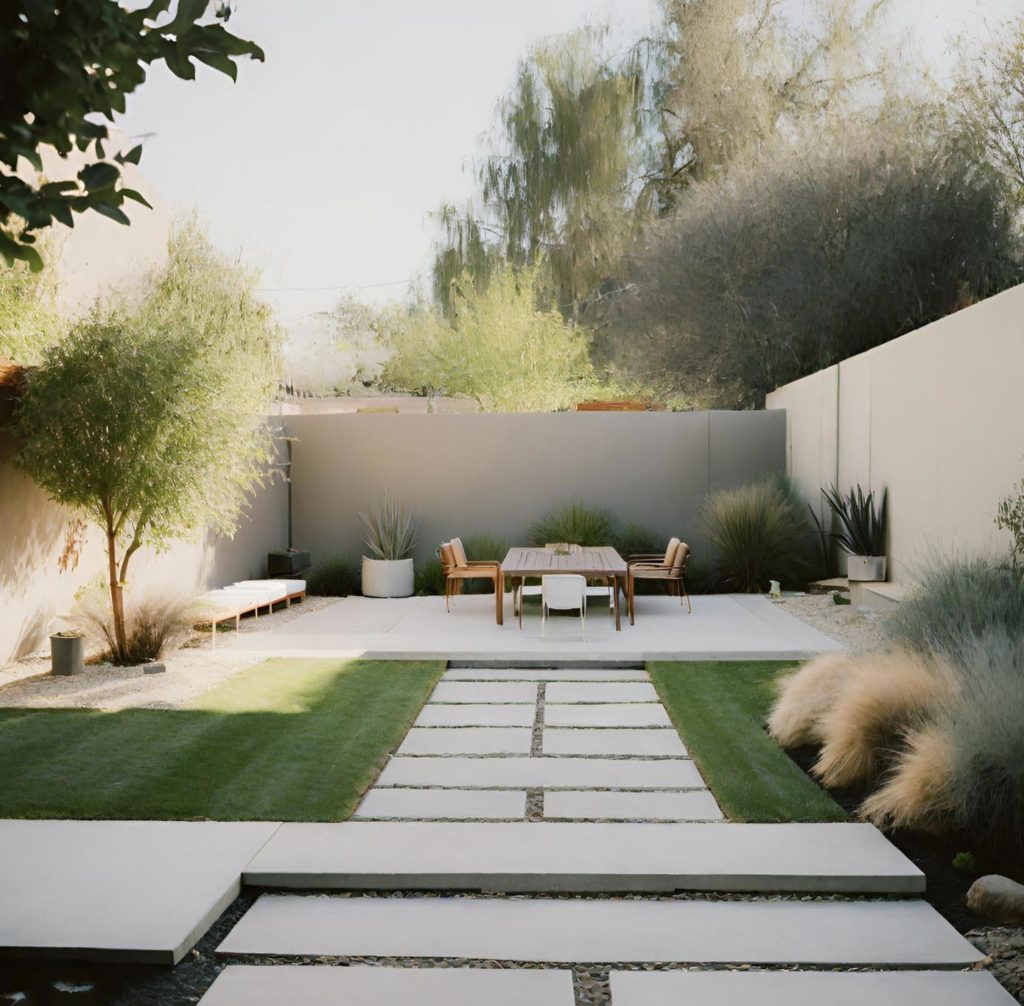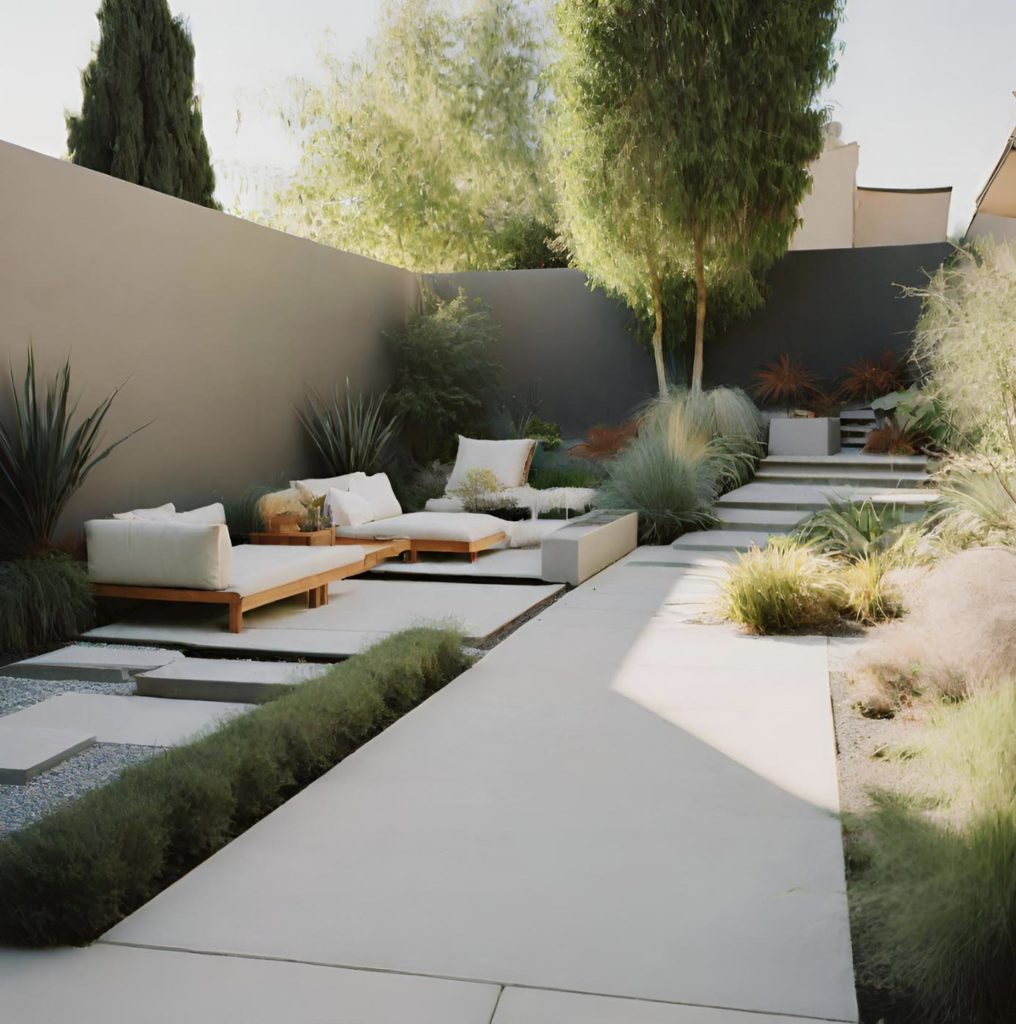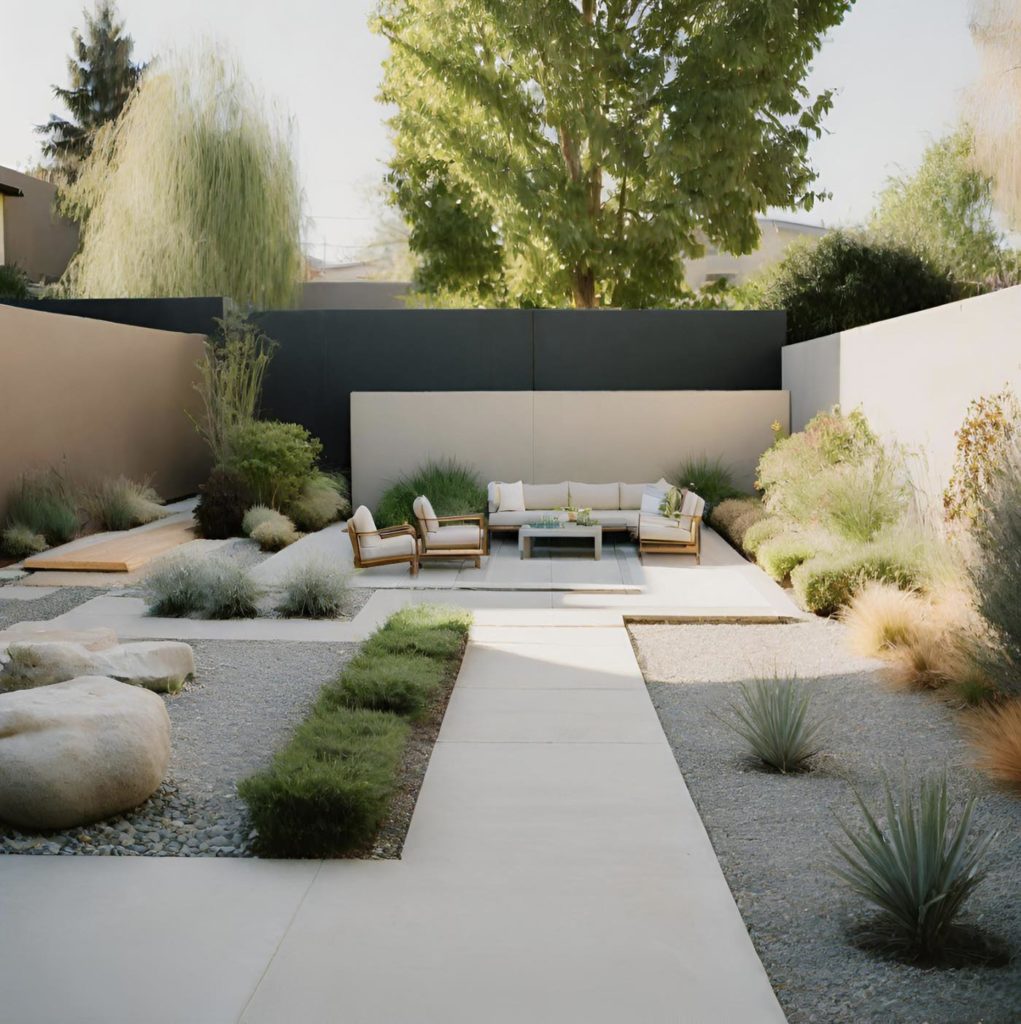Introduction to the Art of contemporary landscape design
Contemporary landscape design is an art form that embraces the beauty of today’s landscapes. It goes beyond traditional landscaping techniques and incorporates modern elements to create visually stunning outdoor spaces.
In this article, we will explore the principles, techniques, and trends of contemporary landscape design. Also how it can transform any outdoor area into a work of art.
The Principles of Contemporary Landscape Design
The Art of Contemporary landscape design is guided by a set of principles. It help create harmonious and visually appealing outdoor spaces. One of the key principles is simplicity.
Minimalism is often employed, with clean lines and uncluttered spaces. That allow the natural beauty of the landscape to shine through.
Another important principle is unity. It involves creating a cohesive design that seamlessly integrates various elements such as plants, hardscapes, and water features.
Balance is also a crucial aspect of contemporary landscape design. It involves distributing visual weight evenly throughout the space, ensuring that no single element dominates the overall design. Additionally, contrast is used to create visual interest and highlight specific areas. This can be achieved through the juxtaposition of different colors, textures, and materials.
Incorporating Natural Elements in Contemporary Landscape Design
In contemporary landscape design, there is a strong emphasis on connecting with nature and bringing the outdoors inside. This can be achieved by incorporating natural elements such as native plants, organic materials, and sustainable practices. Native plants are well-suited to the local climate and require less maintenance, making them an excellent choice for contemporary landscapes.
Furthermore, the use of organic materials. Reclaimed wood, stone, and gravel adds a touch of authenticity and enhances the natural feel of the space. Sustainable practices such as rainwater harvesting, composting, and using environmentally friendly irrigation systems are also integral to contemporary landscape design. These practices not only reduce the environmental impact but also contribute to the overall beauty and functionality of the landscape.
Using Minimalism in Contemporary Landscape Design
Minimalism is a key characteristic of contemporary landscape design. This design philosophy focuses on simplicity and eliminating unnecessary elements. Clean lines, open spaces, and a limited color palette are common features of minimalist landscapes.
In contemporary landscape design, less is often more. Instead of overcrowding the space with numerous plants and decorations. A few carefully selected elements are used to create a visually striking and serene environment.
This minimalist approach allows for better appreciation of the natural beauty of the landscape and promotes a sense of calm and tranquility.
Creating Focal Points in Contemporary Landscape Design
Focal points are essential in contemporary landscape design as they draw the eye and create a sense of visual interest. They can be achieved through various means, such as using bold architectural features, sculptures, or water features. The chosen focal point should complement the overall design and provide a focal point of interest without overpowering the space.
For instance, a striking sculpture placed amidst a minimalist garden can create a captivating focal point that adds depth and intrigue to the landscape.
Similarly, a well-designed water feature, such as a sleek fountain or a tranquil pond, can serve as a focal point while also contributing to the overall ambiance and tranquility of the space.
Sustainable Practices in Contemporary Landscape Design
Sustainability is a crucial aspect of contemporary landscape design.
With the increasing awareness of environmental issues, contemporary designers strive to create landscapes that are not only visually stunning but also ecologically responsible. This can be achieved through various sustainable practices, such as using native plants, conserving water, and employing eco-friendly materials.
By using native plants, designers at Garden Design & Landscapes can create landscapes that are better adapted to the local climate, resulting in reduced water consumption and maintenance needs. Additionally, incorporating water-efficient irrigation systems and utilizing rainwater harvesting techniques can further reduce water usage. The use of recycled and locally sourced materials also reduces the environmental impact while adding a unique touch to the design.
The Importance of Outdoor Living Spaces in Contemporary Landscape Design
In contemporary landscape design, outdoor living spaces play a crucial role in creating functional and inviting environments. These spaces are an extension of the indoors and are designed to provide comfort, relaxation, and entertainment. Outdoor kitchens, dining areas, lounges, and fireplaces are all popular features in contemporary landscape design.
Outdoor living spaces not only enhance the usability of the landscape but also foster a connection with nature. They provide opportunities for socializing, family gatherings, and enjoying the beauty of the outdoors. By incorporating comfortable seating, shade structures, and lighting, contemporary designers ensure that these spaces are functional, comfortable, and aesthetically pleasing.
Contemporary Landscape Design Trends
Contemporary landscape design is constantly evolving, with new trends emerging each year. Some current trends include the use of sustainable materials, vertical gardens, and smart technology integration. Sustainable materials such as recycled plastics, reclaimed wood, and composite decking are gaining popularity as they offer durability and environmental benefits.
Vertical gardens, also known as green walls, are another growing trend in contemporary landscape design. These living walls not only add a striking visual element to the landscape but also provide numerous benefits such as improved air quality and insulation. Additionally, the integration of smart technology, such as automated irrigation systems and outdoor lighting, allows for efficient and convenient management of the landscape.
Examples of Successful Contemporary Landscape Designs
To truly understand the beauty and potential of contemporary landscape design, let’s explore some examples of successful projects. The High Line in New York City is an excellent example of how contemporary landscape design can transform an urban space. This elevated park features a stunning combination of native plants, modern seating, and unique perspectives of the cityscape.
Another inspiring example is the Gardens by the Bay in Singapore. This futuristic garden showcases innovative design elements such as towering Super trees, vertical gardens, and sustainable practices. The result is a breathtaking landscape that seamlessly blends nature and technology.
Conclusion: Embracing the Beauty of Contemporary Landscape Design
Contemporary landscape design offers a unique and exciting approach to creating beautiful outdoor spaces. By embracing the principles of simplicity, unity, and balance, and incorporating natural elements and sustainable practices. You can unlock the beauty of your own landscape. Whether you choose to embrace minimalism, create focal points, or design functional outdoor living spaces, contemporary landscape design allows for endless possibilities. So go ahead, unleash your creativity, and transform your landscape into a work of art of contemporary landscape design.






